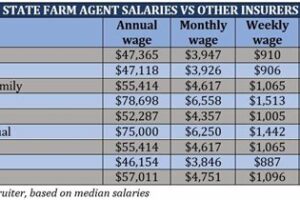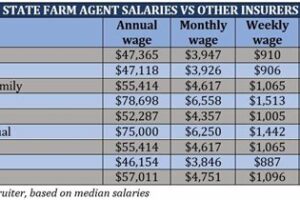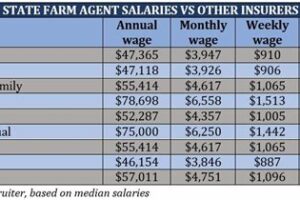Washington state is home to over 37,000 farms, producing everything from apples to wine. Explore the diverse agricultural landscape today.
Washington State, located in the Pacific Northwest region of the United States, is known for its diverse geography, from the rugged coastline to the towering Cascade Mountains. But did you know that agriculture is also a significant industry in this state? With its rich soil and favorable climate, Washington is home to numerous farms that produce a wide variety of crops and livestock. So, just how many farms are in Washington State? Let’s delve into some fascinating facts and figures.

Agriculture is a vital industry in Washington State, contributing billions of dollars to the state’s economy each year. The diversity of crops grown in Washington is impressive, ranging from apples, cherries, and grapes to potatoes, wheat, and hops. The geographical distribution of farms in the state is also quite diverse, with farms located in both rural and urban areas. The size of farms in Washington varies greatly, from small family-owned operations to large-scale commercial farms.
Washington State is home to numerous small and family-owned farms. According to the United States Department of Agriculture (USDA), there are approximately 37,000 farms in Washington, with about 98% of these classified as family-owned. These small farms play an important role in the local economy, providing fresh produce and other agricultural products to nearby communities.
Women and minorities also play an essential role in agriculture in Washington. The USDA reports that about 12% of farms in the state are run by women, while about 11% are operated by minority farmers. These individuals face unique challenges in the industry but continue to make significant contributions to the state’s agricultural sector.
The impact of technology on agriculture in Washington cannot be overlooked. Many farms use innovative technologies such as precision farming, which allows for more efficient use of resources and better yields. Drones are also becoming increasingly popular in agriculture, allowing farmers to monitor crop health and make informed decisions about irrigation and fertilization.
Agriculture remains a critical part of Washington’s economy. In 2017, the industry contributed over $10 billion in revenue to the state’s economy and employed over 160,000 people. However, farmers in Washington face several challenges, including climate change, water scarcity, and labor shortages. These issues require innovative solutions and support from policymakers to ensure the continued success of the agricultural sector.
The future of agriculture in Washington State is bright, with continued growth and innovation expected in the years to come. As demand for locally sourced, sustainable, and organic produce continues to increase, small and family-owned farms are likely to play an even more critical role in the state’s agricultural sector. Technology will also continue to shape the industry, with new innovations and tools helping farmers to increase efficiency and yields while minimizing environmental impact.
Once upon a time, in the beautiful state of Washington, there were countless farms spread across the vast landscape. The state is known for its fertile soil, diverse climate, and abundant water supply, making it an ideal location for agriculture. But just how many farms are in Washington State?
- According to the United States Department of Agriculture (USDA), there are over 37,000 farms in Washington State.
- These farms cover a total of 15.6 million acres of land, which is roughly 29% of the state’s entire land area.
- The average size of a farm in Washington State is around 426 acres, but there are farms as small as a few acres and as large as several thousand acres.
The majority of farms in Washington State are family-owned and operated, with many passing down through generations. Each farm produces a variety of crops and livestock, contributing to the state’s diverse agricultural industry.
- Apples are the top agricultural commodity in Washington State, with over 170,000 acres dedicated to their production.
- Other significant crops include wheat, potatoes, cherries, grapes, hops, and mint.
- Livestock production is also significant, with cattle, dairy, and poultry being the primary focus.
Washington State’s farms not only provide food for local communities but also contribute to the national and global food supply. The state’s agricultural industry generates billions of dollars each year and provides employment opportunities for thousands of people.
In conclusion, Washington State is home to over 37,000 farms, covering millions of acres of land and producing a wide range of crops and livestock. These farms play a vital role in the state’s economy and provide food for people all over the world.
Thank you so much for taking the time to read about how many farms are in Washington State. As you can see, the agriculture industry is thriving in this beautiful Pacific Northwest state. From wheat fields and orchards to dairy farms and vineyards, there is no shortage of diverse agricultural productions.One of the most striking things about the farms in Washington State is their sheer size. With over 15 million acres of farmland, the state is home to some of the largest farms in the country. This is largely due to the state’s fertile soil, abundant water supply, and favorable climate conditions. As a result, farmers are able to grow crops year-round and produce an incredible variety of fruits, vegetables, and grains.It’s also important to note that the agriculture industry in Washington State extends beyond just crop production. The state is home to a significant number of livestock farms, including dairy, beef, and poultry operations. These farms play a vital role in the state’s economy, providing jobs and contributing millions of dollars to the state’s GDP.In conclusion, we hope you have gained a deeper appreciation for the agriculture industry in Washington State through this article. Whether you’re a local resident or just visiting the area, we encourage you to take some time to explore the many farms and agricultural operations in the state. From scenic vineyards to sprawling wheat fields, there is truly something for everyone to enjoy. Thank you for reading, and we hope to see you back here soon!.
Washington State is known for its fertile land and diverse agriculture. Many people wonder about the number of farms present in Washington State. Here are some of the most frequently asked questions about the number of farms in Washington:
-
How many farms are in Washington State?
As of 2020, there are approximately 37,000 farms in Washington State.
-
What is the size of farms in Washington State?
The average size of farms in Washington State is around 400 acres.
-
What types of crops are grown in Washington State?
Washington State is known for growing a variety of crops including apples, cherries, grapes, hops, wheat, potatoes, and more.
-
What is the economic impact of farms in Washington State?
Farms in Washington State contribute around $10 billion to the state’s economy each year.
-
How many jobs are supported by farms in Washington State?
Farms in Washington State support around 160,000 jobs, both directly and indirectly.
Overall, farming plays a significant role in Washington State’s economy and provides jobs and food for people throughout the state and beyond.






